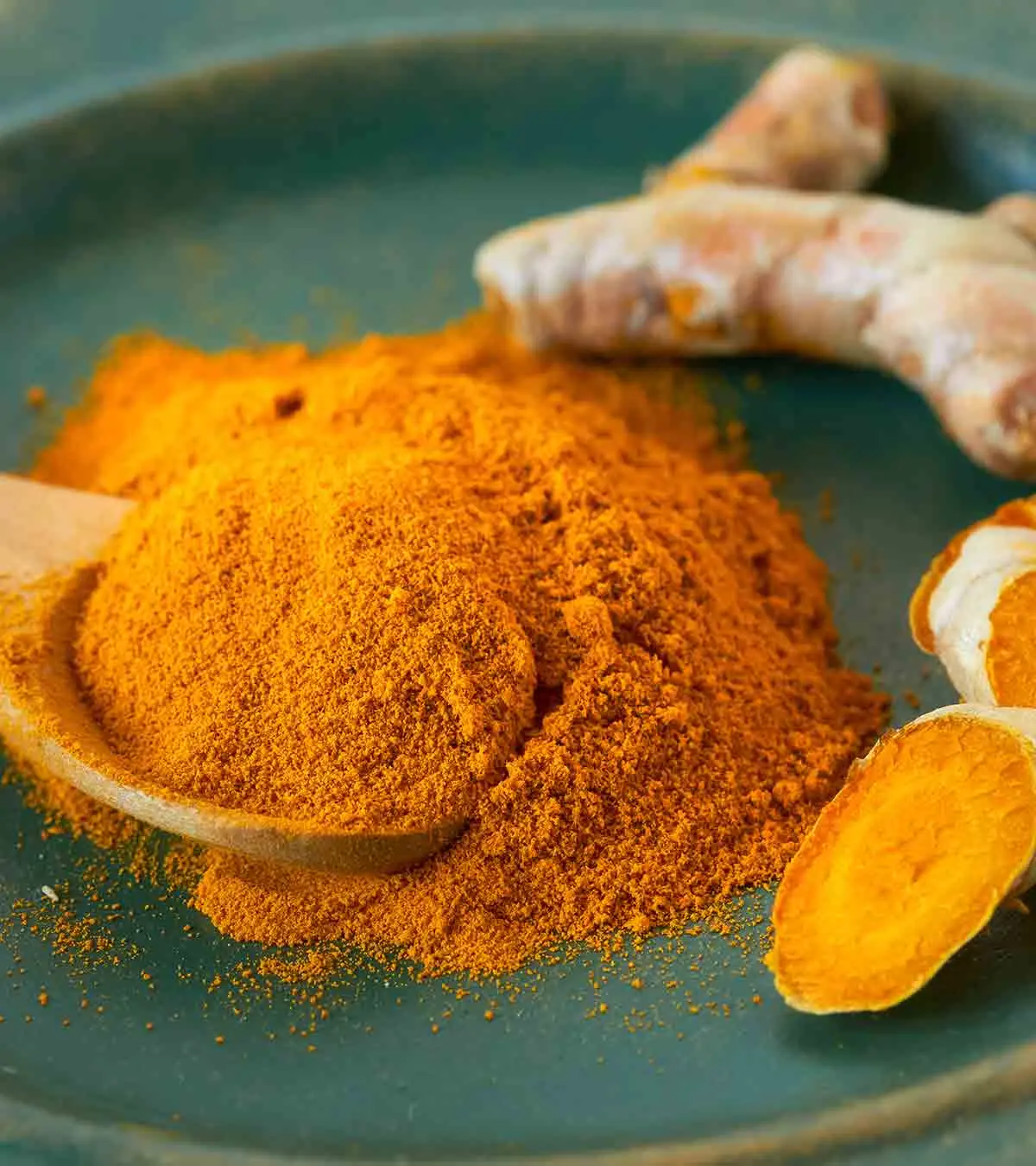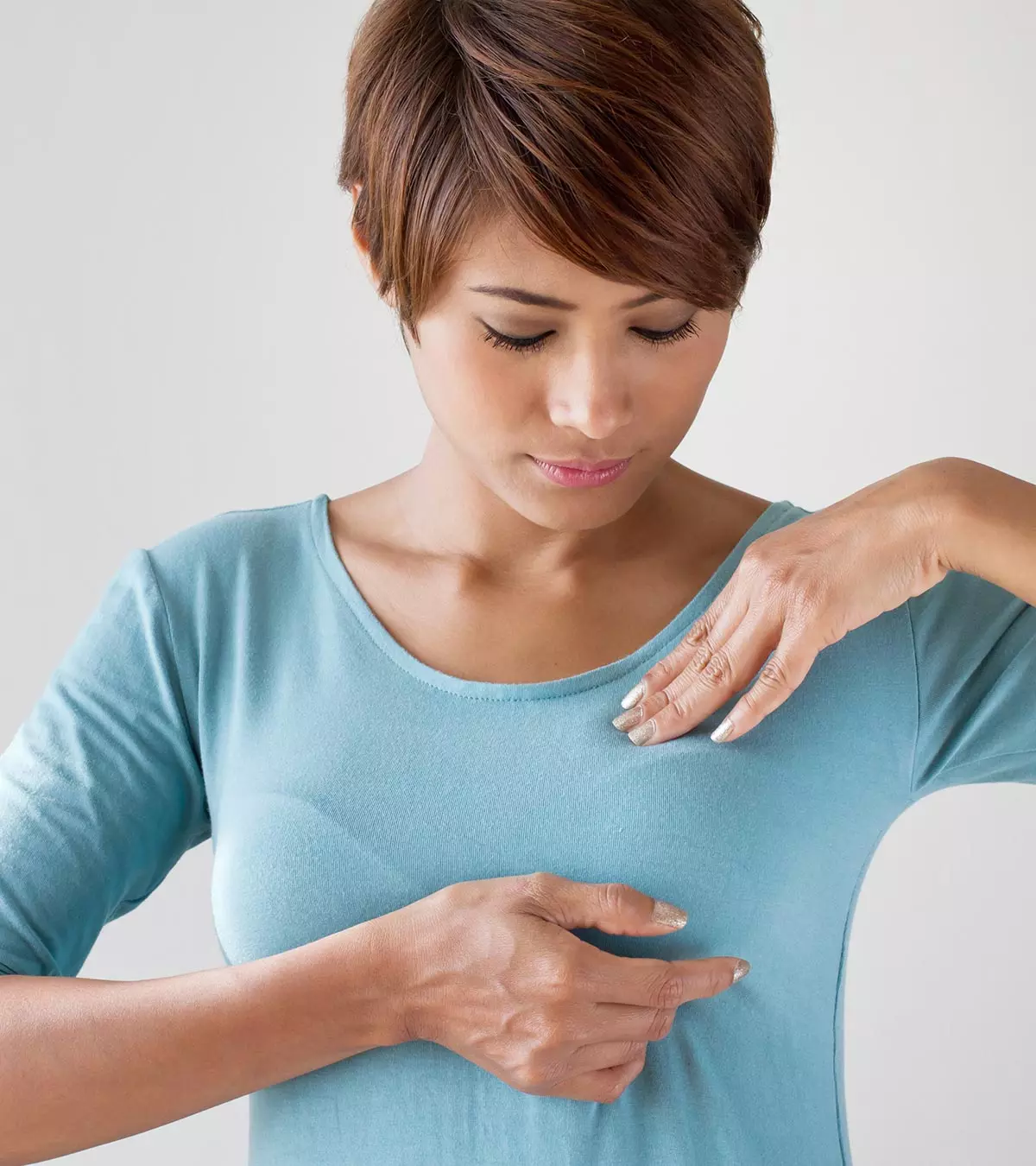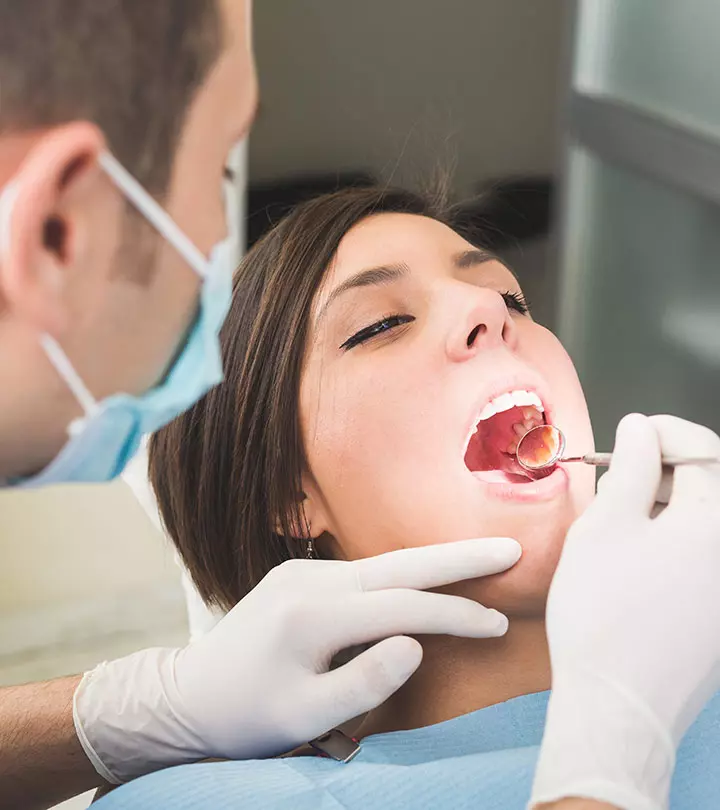
Image: ShutterStock
Lactation massage is a breast massage technique to relax breast tissue and reduce breastfeeding problems. Although breastfeeding is a pleasant experience for most mothers, lactation woes, such as low breast milk supply and breast pain, are common and overwhelming. Lactation massage and nipple stimulation help to empty breasts and enhance milk production. Most nursing issues are self-resolving, and you may try lactation massage to manage the breastfeeding discomforts. Read on to learn the benefits, methods, and tips for lactation massage.

Key Pointers
- A lactation massage could open blocked milk ducts, increase the milk flow and reduce breast pain.
- To massage your breasts, sit in a reclining position and use oil as a lubricant.
- If you have mastitis, consult your doctor to learn suitable breast massage techniques.
Benefits Of Lactation Massage
Research highlights that breast massage could help resolve the following breastfeeding problems (1) (2).
- Breast pain: A nursing mother could develop breast pain due to breast engorgement or breast infection (mastitisiA painful infection of the breast tissue that causes inflammation, swelling, and redness ). Studies indicate that breast pain is one of the most common reasons nursing women discontinue breastfeeding (13). However, different types of breast massage could effectively help ease breast pain, provide breast engorgement relief, and prevent adverse outcomes, such as reduced breastfeeding or early cessation of nursing (3).
- Low milk flow: Breast massage in association with breast pumping could increase breast milk volume (4) (5). A study demonstrated that administering certain types of breast massage may even improve breast milk quality by increasing the milk’s lipidsiFatty compounds that store energy and help build cell membranes. , caseiniThe main protein in milk that supports muscle growth and repair , and total energy (6).
- Blocked milk ducts: Breasts contain narrow milk ducts that pass milk from milk glands to the nipple. A baby suckles on the breast to activate the let-down reflex, causing the milk to flow out. However, in some cases, when the milk doesn’t drain from these ducts properly, it stagnates to form a tender, painful lump. In such instances, gently massaging the lump towards the nipple could help relieve the bulge, causing the milk to flow easily (7) (8). A study revealed that 65% of new mothers found therapeutic lactation massage learned during medical visits effective in managing conditions like mastitis and blocked ducts more effectively at home (8). However, if a mother develops severe mastitis, seeking medical help ensures safe massage techniques and prevents complications. Childbirth and breastfeeding educator Mindy Cockeram says, “If the woman suspects mastitis, general massage should be avoided; lymphatic massage is recommended instead.”
Teresa, a mother of three and an author, shares in her blog about the day she attempted a lactation massage when her son refused to breastfeed. She says, “I felt my left breast becoming full of milk. I offered it to my son shortly after he had his lunch. But he refused. He would usually breastfeed again after eating lunch. I thought that maybe he was still full. So I just let him play and wait a while. But he kept on playing until he eventually became sleepy and fell asleep. He didn’t get to nurse.
“I felt my left breast becoming fuller as my baby slept. I felt lumps around my breast. My left breast was becoming harder. So, I decided to massage my left breast. And as I slowly worked around massaging it gently, I saw some milk coming out from my nipple. I continued massaging my breast for a few more minutes, and more milk flowed; I decided to express my milk by hand. I massaged my left breast like my previous lactation consultant did when I had my lactation sessions, and then I expressed milk by hand in between. I’m glad I tried doing it today. I was relieved of the discomfort and gained a new option next time the same thing happens (i).”

Besides these, breast massage could help in lymphatic drainage, which may help remove toxins and other harmful waste from the breast.
 Quick fact
Quick factSteps To Do Breast Massage For Lactation
Registered dietician and lactation consultant Brittany Brown says, “A therapeutic breast massage during lactation (TBML) can help prepare the breasts for milk removal and might even improve comfort for the lactating mother. Anyone performing this massage must do so gently, treating the breasts with the same care used to touch a baby’s face.” There are different ways to perform a lactation massage. The type of massage suitable to you will depend on the massage’s intent. Thus, consulting a lactation consultant is advisable. Understanding how to express breast milk by hand is quite vital for a smooth nursing experience.
Nonetheless, here are some simple steps that you may follow to resolve general breastfeeding problems, such as engorgement and plugged ducts (10).
- Sit comfortably, such as in a reclining position. Ensure that you are calm and the room’s ambiance is pleasant.
- Warm your hands by rubbing them against each other, or you could use a warm towel to do it.


 Research finds
Research findsAre There Any Risks Of Breast Massage During Lactation?
There are no apparent risks of breast massage during lactation provided you do it right. Still, you should consult a lactation consultant or doctor before you massage your breast, especially while having a breast infection (mastitis).
Dr. Margaret Thompson, physician at Cleveland Clinic’s Department of Breast Services, states that breast massage can be performed as often as the mother prefers and poses no known risks to her as long as it feels comfortable. However, she advises seeking medical attention if mothers notice an unusual breast lump, nipple discharge, or skin changes around the breasts (14).
If you are unsure about how to massage correctly, consult a licensed massage therapist. They may guide you on the right way to massage and even ascertain if the massage benefits you.
Frequently Asked Questions
1. Does vibration increase milk supply?
According to a study, the DC Motor Vibratory (DMV) system can enhance the process of breastfeeding in postpartum women (11).
2. Does massaging breasts prevent sagging?
The practice of massaging breasts has been around since ancient times. In some cultures, a full-body postpartum massage is an important part of maternal care after childbirth. A good oil massage is believed to improve blood circulation and prevent breasts from sagging. However, there is no medical study or research to support the claims.
3. How often should lactation massage be done?
Lactation massage may be done in regular intervals before feeding or pumping to increase the milk supply or as per your doctor’s advice.
4. Is lactation massage safe for mothers who have C-sections?
Lactation massages are safe for mothers who have undergone a C-section and may be conducted by nurses to help stimulate breast milk production and deal with lactation issues, such as breast engorgement and pain, and delayed onset of breastfeeding (12).
5. Can lactation massage be performed daily?
Yes, lactation massage can be done daily to enhance milk flow and reduce discomfort. However, ensure you use gentle pressure and avoid excessive force. Also, pay attention to your body’s signals and seek advice from a healthcare provider if you feel any pain or discomfort.
6. Can lactation massage cause an oversupply of milk?
When done gently and with the correct technique, a lactation massage helps maintain a stable milk supply. However, excessive massage can overstimulate the breasts, worsening an overactive milk supply (16).
A lactation massage or a breast massage is effective in relieving problems such as breast pain and clogged milk ductsiA condition where the milk duct gets blocked, leading to lumps, swelling, itching, and soreness. . It may improve milk volume and quality and make stretch marks less visible. In addition, reduced swelling around the nipples helps babies to latch properly. You may massage your breasts before or after a feed or during a bath. You may use a suitable oil as a lubricant. However, consult a doctor or a massage therapist to know the proper techniques, especially if you have a breast infection.
Infographic: Oketani Breast Massage
Oketani massage is a beneficial procedure that improves lactation and builds confidence in mothers who have difficulty nursing. Explore this infographic to learn its uses and how it is done to support breastfeeding.
Some thing wrong with infographic shortcode. please verify shortcode syntax
This video provides valuable insight on how to massage your breasts to increase your milk supply! Follow along with our easy-to-follow steps and get the most out of your breastfeeding journey.
Personal Experience: Source
MomJunction articles include first-hand experiences to provide you with better insights through real-life narratives. Here are the sources of personal accounts referenced in this article.
i. Expressing breastmilk by hand;https://mommytg.blogspot.com/2013/02/expressing-breastmilk-by-hand.html
References
1. Sukhee Ahn et al.; Effects of breast massage on breast pain, breast-milk sodium, and newborn suckling in early postpartum mothers; NCBI
2. Postpartum Massage; American Pregnancy Association
3. Loretta Anderson et al.; Effectiveness of breast massage for the treatment of women with breastfeeding problems: a systematic review; NCBI
4. Methods of milk expression for lactating women; NCBI
5. Hand Expression of Breastmilk; La Leche League GB
6. Foda, Mervat I. et al.; Composition of Milk Obtained From Unmassaged Versus Massaged Breasts of Lactating Mothers; Journal Of Pediatric Garsteneterology And Nutrition
7. Breast pain and breastfeeding; NHS
8. Ann M Witt et al.; Therapeutic Breast Massage in Lactation for the Management of Engorgement, Plugged Ducts, and Mastitis; NCBI
9. My Breasts are Swollen and Engorged; The Institute for the Advancement of Breastfeeding and Lactation Education
10. New Strategies For Relieving Engorgement: Tips and Tools From Maya Bolman, BA, BSN, IBCLC; International Lactation Consultant Association
11. Siti Saidah Nasution, et al; (2018); The effectiveness of DC Motor Vibrilatory Stimulus (DMV) among Postpartum Women on Giving Breast Milk.
12. Maryam Mahdizadeh-Shahri et al.; (2025); The Effect of Oketani Breast Massage on Successful Breastfeeding, Mothers’ Need for Breastfeeding Support, and Breastfeeding Self-Efficacy: an Experimental Study; NCBI.
13.Anderson, Loretta; Breast massage: can it keep mothers breastfeeding longer?; The Joanna Briggs Institute.
14. 6 Benefits of Breast Massage (and How To Get Started Today); Cleveland Clinic
15. Linda Sweet and Vidanka Vasilevski; (2025); Evaluation of a new lactation device ‘Lactamo’ designed to apply massage, heat or cold, and compression to the breast; International Breastfeeding Journal.
16. Oversupply; La Leche League
Community Experiences
Join the conversation and become a part of our nurturing community! Share your stories, experiences, and insights to connect with fellow parents.
Read full bio of Arushi Agrawal

Brittany Brown is a dietitian, lactation consultant, and wellness advocate based in Nova Scotia, Canada. With over a decade of experience, she empowers families with evidence-based support in infant nutrition, breastfeeding, and mindful feeding. Passionate about community and holistic health, Brittany helps parents navigate feeding with confidence and clarity, ensuring every family feels nourished and supported on their journey.
Brittany Brown is a dietitian, lactation consultant, and wellness advocate based in Nova Scotia, Canada. With over a decade of experience, she empowers families with evidence-based support in infant nutrition, breastfeeding, and mindful feeding. Passionate about community and holistic health, Brittany helps parents navigate feeding with confidence and clarity, ensuring every family feels nourished and supported on their journey.
- Mindy Cockeram is a board-certified lactation consultant and runs her private practice in South Carolina. She trained as an antenatal teacher with the National Childbirth Trust (NCT) in London, England and taught childbirth classes for the NCT and St Georges Hospital Trust. Later, she relocated to the US.
 Mindy Cockeram is a board-certified lactation consultant and runs her private practice in South Carolina. She trained as an antenatal teacher with the National Childbirth Trust (NCT) in London, England and taught childbirth classes for the NCT and St Georges Hospital Trust. Later, she relocated to the US.
Mindy Cockeram is a board-certified lactation consultant and runs her private practice in South Carolina. She trained as an antenatal teacher with the National Childbirth Trust (NCT) in London, England and taught childbirth classes for the NCT and St Georges Hospital Trust. Later, she relocated to the US.
Read full bio of Swati Patwal
Read full bio of Rohit Garoo
Read full bio of Anindita Ghatak


















